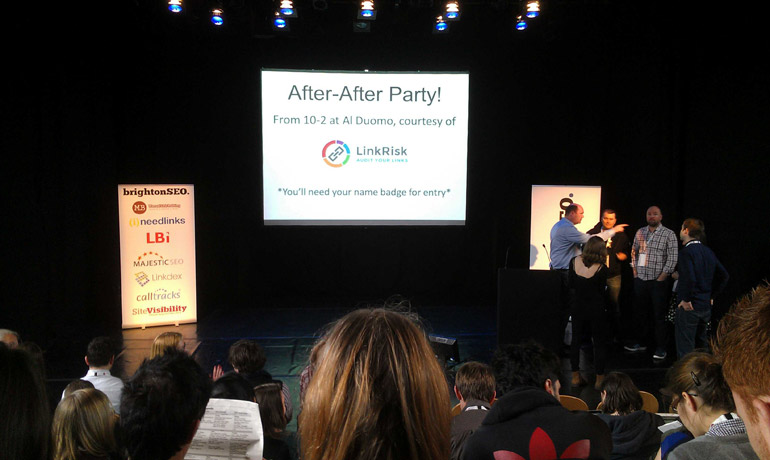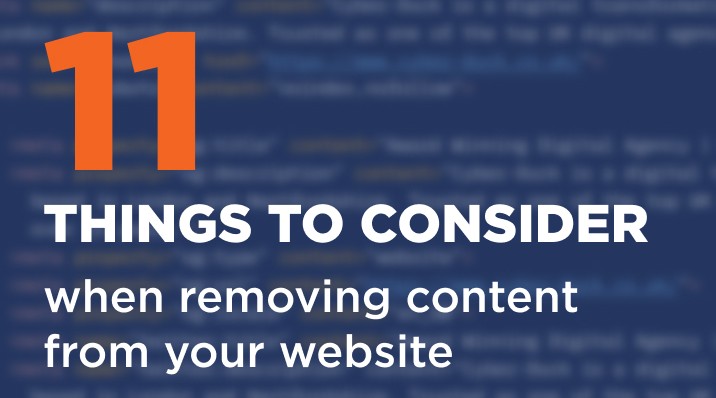I took a trip down to the south coast 2 weeks ago to mingle with fellow leading SEOs at the highly revered BrightonSEO conference. In this post, I have highlighted what I believe are the most important search marketing tactics learnt from the conference.
Long live the King!
As expected, in terms of Search Engine Optimisation (SEO), content is very much still in the ascendency of its throne. It is becoming more apparent that the best way to build organic, one-way links to your website is to create and post unique content regularly, that will provide some real value to either your customers or peers from within your industry.

Stefan Hull from Propellernet preparing his talk on creating good content.
At the conference, we were shown examples of how to create and share amazing content, which draws traffic and links from external sources. The easiest and most obvious way to do this is by using a blog, where you can generate your own content and get it published on the web instantly. The blog can be used in a wide variety of ways, so make sure you use it for:
- Posting relevant and interesting company news
- Posting any recent developments in your industry
- Creating an opinion piece regarding a topical subject in your industry
- Providing tutorials on any tools, software or services you have used
- Reviews of any products/services that compliment your own
Remember there are other ways of updating your website with great content. Create inspiring web pages which provide visitors with insightful data or information and you may find they’re more than happy to refer their friends to your website. Lauren Pope from Energy Forecaster showed us how uSwitch.com did this by creating a page which compares energy prices, helping their customers to ensure they are not paying over the odds for their energy bills. This is a great source of information for their market and therefore increases their popularity and “linkability”.
The links effect
Have you been penalised by Google? Even if you are adhering to SEO white hat techniques, and creating good content, you may still be dropping (seemingly unfairly) down the search engine results pages (SERPs) for certain keywords and this could be because you have bad links. Before commencing with your link strategy, you want to make sure that the backlinks which are currently pointing to your website are coming from good, trustworthy and reliable sources.
The best way to be sure of this is to conduct an in-depth link audit on your website, which will highlight the links you should disregard. For a comprehensive audit, you are likely to need analytics tools for your analysis, but the best place to start is always your free webmaster tools account. If you are unsure of how to differentiate between the good and bad, it is best you stop link-building altogether until you review and reset your link-building standards.
So what exactly is a low-quality link? Well, a lot of this comes down to common sense. The main questions I would ask when determining whether a link is low quality is:
- Am I proud to talk about the article which contains the link?
- Does the website where the link is found have a large number of social shares?
- Does the website where the link is found, appear in front of a targeted audience?
- Does the link come from a credible or industry renowned resource?
If the answer to a majority of these questions is no, then you can be pretty sure you are looking at a bad backlink. There are tools available to help, like Linkrisk, which algorithmically calculates a score to analyse the level of risk in your website's backlink profile, which I found to be quite popular in amongst other attendees.
Google will not have picked up on all low-quality websites with spammy backlinks, but you can be sure they will catch up, just as Interflora learnt earlier in the year, so removing links which point to your domain is always going to be a calculated risk.
When you have identified the links and compiled a comprehensive list, you then need to go through the arduous task of removing your bad backlinks. Thankfully, Google has their free disavow tool which allows you to submit a list of links which you do not want to be directed to your website, but you are encouraged to remove the links directly and demonstrate to Google that you have proactively looked to remove bad backlinks.

BrightonSEO draws SEO professionals from across the UK and Europe.
Chase the user, not the algorithm
SEOs can be guilty of trying to please the search engine algorithms, rather than enhancing and modifying their websites user experience. Ultimately, it is the customer coming to your website, engaging with your brand and paying your bills, not Google!
If you work with this mentality, you can be clever and quite creative; you could create carefully crafted meta-tags and content which both sell and advertise your products and services, as well as provide the user with relevant information they can expect to find on your website. Rather than being bogged down by “best SEO practices” for navigation on your website, you could strategically map a user-centred website flow, which allows easier user navigation. You could even make it enjoyable! User experience (UX) is crucial for maintaining engagement and ties in directly with SEO because if search engines determine that your website is engaging your audience, then you will surely reap the benefits.
If you would like to find out more about modifying your SEO strategy in line with the latest updates, algorithm changes, and best practices, get in touch today and we'll be happy to help.



